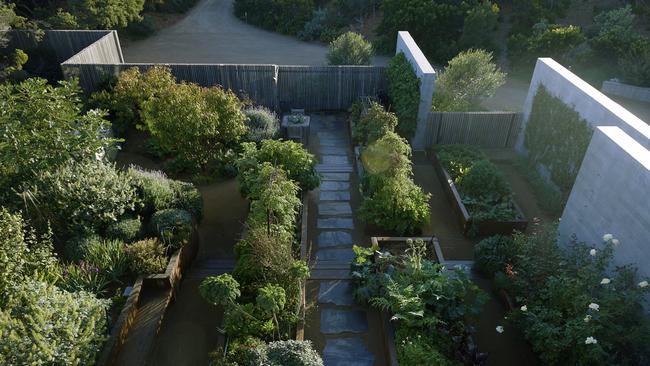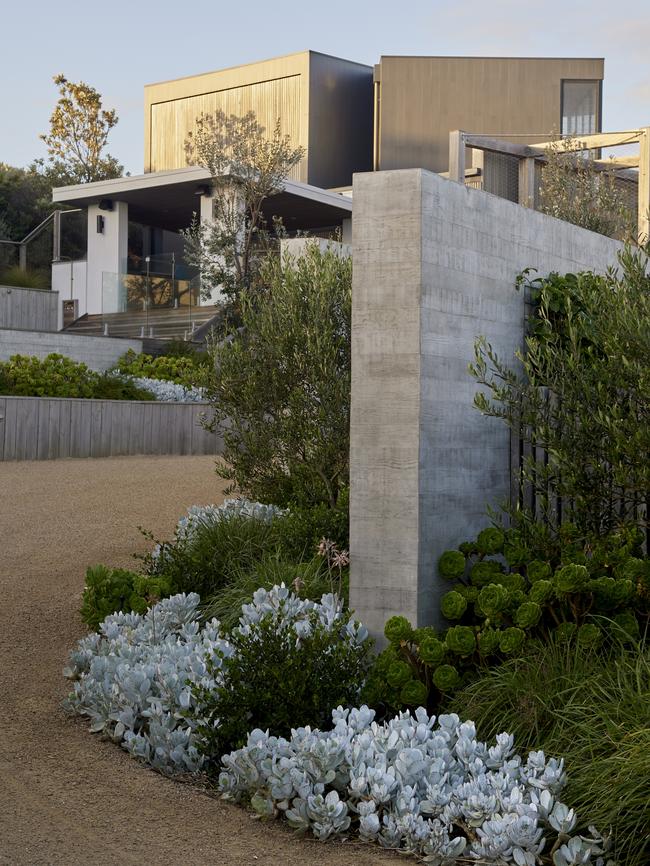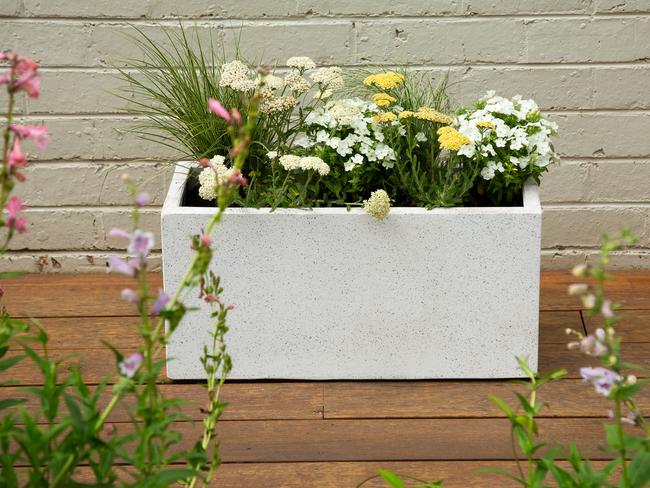Smart thinking: the Walled Dune Top garden at St Andrews Beach, Mornington Peninsula
Smart design can tame the toughest sites — as this oceanfront garden from designer Fiona Brockhoff’s new book shows.

Garden designer Fiona Brockhoff is known for crafting landscapes that work with nature, not against it. Her adventurous use of indigenous plants and local materials have influenced many other designers; now she is keen to show a broader audience how to create sustainable, beautiful gardens with strong sense of place.
“I want people to look after the world in a better way,” Brockhoff explains. “We can do that by making more sensible choices such as using local plants and products to consume fewer resources. It can also involve things like composting, growing some of your own food, recycling, collecting water and drying clothes on a clothesline. If I can help people do that, I’m happy.”
Brockhoff’s new book, With Nature (Hardie Grant, $70), features 14 gardens of various styles, from small inner-city spaces to coastal and rural properties. Many are on Victoria’s Mornington Peninsula, where she lives with her partner, landscape contractor David Swann. Their own garden, Karkalla, created on a windswept sand dune at Sorrento, is renowned. And it provided a wealth of experience to draw upon for the “Walled Dune Top” garden featured in the book (and pictured here), which is similar in topography, size and relationship to the ocean. The site at St Andrews Beach, surrounded by tea tree scrub, offered fine ocean views but had little wind protection. The owners, a semi-retired couple from Melbourne, wanted a garden that fitted into the landscape but they also wanted to grow vegetables, fruit and flowers. The solution was to create a walled kitchen garden on the sheltered north side of the dune, using off-form concrete walls that extend the architecture of the home into the landscape. “They help anchor the house to the site, almost like buttresses,” says Brockhoff. “Getting the scale and proportions of these walls right was critical. You have to be brave.”

The walls maximise solar warmth and wind protection, exclude rabbits and provide the opportunity to espalier fruit trees. Long, raised planter boxes were built for ease of gardening and to contain the enriched soils needed for productive plants. Compost bins recycle kitchen and garden waste back into these beds.
“The rest of the site we planted to the existing conditions,” says Brockhoff. About two-thirds of the 8000sqm property remains natural bush, with a long drive winding through it to a gravelled forecourt, where specimens of Banksia integrifolia identify the entrance to the house. Weathered timber decking surrounds the remodelled pool to the east, where the planting is a combination of indigenous species and site-suitable exotics such as olives, aloes and succulent Cotyledon and Aeonium species. There is no lawn. On the windward side of the house, the ocean views are carefully framed by gnarled tea trees and offset by dynamic seas of shrubs and tussock grasses.
Brockhoff includes a list of her signature plants in the book, and there’s a planting list for each garden. “People find the lists really helpful,” she says. “But having a look over the neighbour’s fence is a great way to work out what will grow in your neighbourhood. Just keep your eyes open.”
Q&A
My tall lillypilly hedges are full of white wax scale. Removing them by hand would take weeks – any suggestions? Deborah Hoffman, by email
Mature lillypilly hedges are prone to this pest, which thrives in the shadier, protected areas inside the hedge. Eco-Neem and oil sprays kill young scales but won’t penetrate the thick, waxy, protective coating on adults. Systemic sprays containing imidacloprid such as Confidor, Bug Killa and Conguard will work, but are toxic to bees. Use only if the plants in this bed will not flower for four months. Getting more light inside the hedge will help – try pruning the whole top off as lillypillies will recover well from this.
Would smoke from a firepit damage the established Manchurian pear trees that form a canopy above it? David Murphy, Sydney
It’s unlikely. And the leaves of deciduous trees do not catch fire easily. But you should avoid making smoky fires – only use dry, seasoned wood or heat beads and never burn treated pine or painted wood. Note that wood smoke can be harmful to health and increases air pollution. Ethanol firepits are clean-burning but put out less heat. Check your local council regulations too.
What vine would grow on our north-facing, black fence? It’s next to the driveway and gets very hot. Shauna Hockley, Adelaide
The ideal would be bougainvillea, which loves these conditions; choose a medium size variety. Also look at native snake vine (Hibbertia scandens), bower vine (Pandorea jasminoides) or ivy-leafed pelargoniums.

Send your questions to: helenyoungtwig@gmail.com or Helen Young, PO Box 3098, Willoughby North, NSW 2068. The best question for August wins an 80cm-long Precinct Lite Trough Planter in white, worth $128, from Northcote Pottery. July’s winner is Deb Christiansen of Melbourne for her question about tree dahlia cuttings for friends.




To join the conversation, please log in. Don't have an account? Register
Join the conversation, you are commenting as Logout